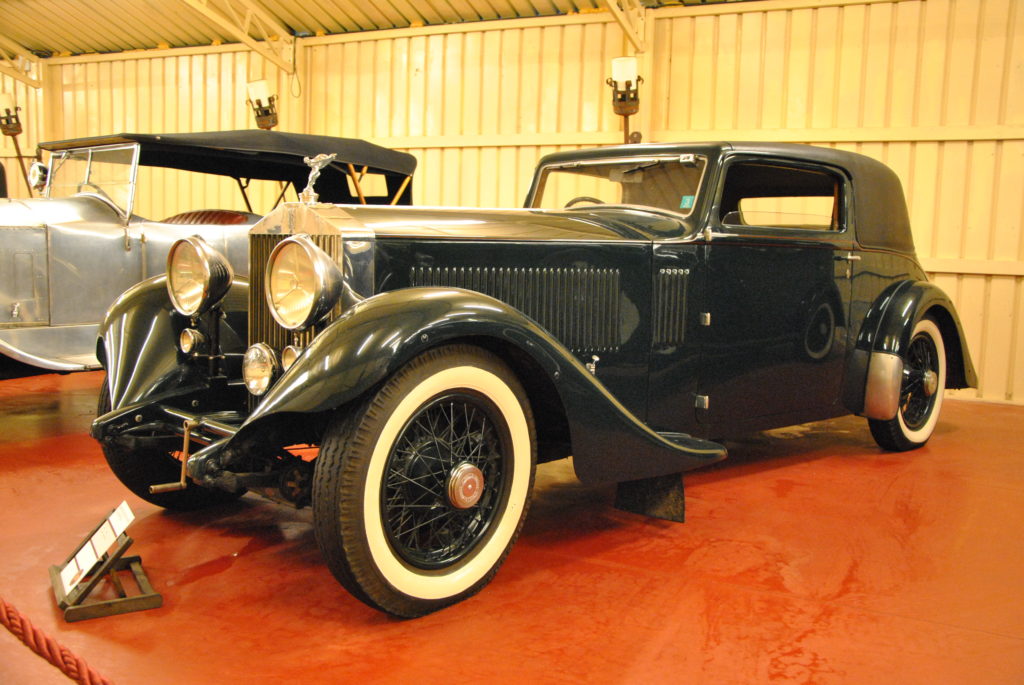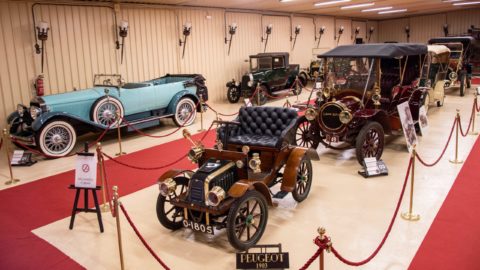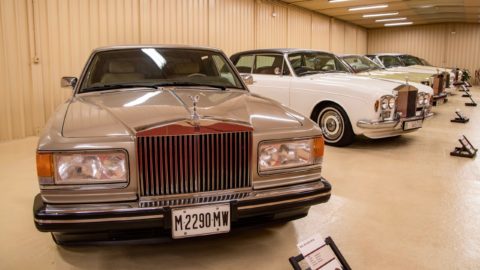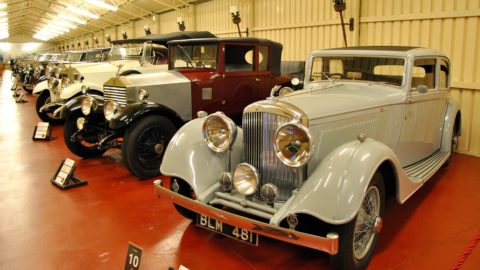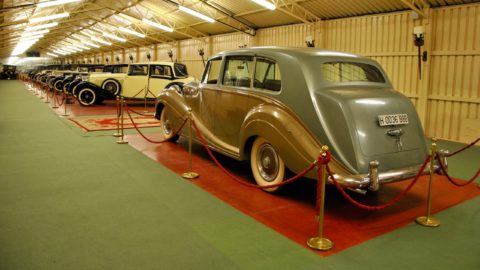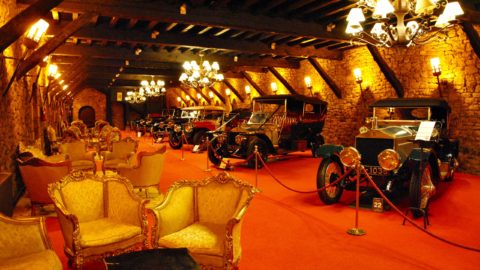1932 Rolls-Royce Phantom II S Continental
This elegant example was shipped from the United Kingdom to Australia, where it was delivered on September 28, 1932, to its first owner, a prosperous bookmaker named JPC Govett, who was fond of sports cars. The chosen body style was a two-door, four-seat Sportsman Coupé, ordered from the local coachbuilder Martin & King, a company established in Melbourne since 1888. Today, this is the only Continental designed by this firm.
The original exhibited model is distinguished by the absence of a running board attached to the front wing for access to the cabin. The spare wheel positioned at the rear, instead of on the sides of the bonnet, provides a more harmonious weight distribution. The rear drop with a “ducktail” shape is a curious feature.
It is finished with a dark green body and a black “false cabriolet” roof. Although it is a coupé, it features a spacious four- or five-seat interior, upholstered in black leather with green carpet, accessible through two long, frameless doors, well-fitting and nearly one and a half meters long. In 1994, it became part of the Miguel de la Vía Collection, a few years after additional features and improvements such as a harder “leaf spring” suspension, a steering column with a tighter angle, and a meticulous restoration of the paint and upholstery carried out in London.
From its early days, Rolls-Royce showed great interest in driving on the continent, where its models demonstrated superiority and reliability by winning notable tests like the Alpine trials. At the time, French roads had smooth surfaces and long straights that allowed for faster routes, while British roads were narrow and winding. This led Henry Royce to design a model aimed at being driven on the continent’s roads, for enthusiasts who appreciated speed, acceleration, and flawless driving, along with the charm, dignity, and reliability that a Rolls-Royce represented.
The “Continental” is the sporty version of the base model, and from its launch in 1929 at the Derby factory until the Phantom III’s introduction in 1936, it was a highly sought-after model. Its lightness allowed continental manufacturers the freedom to work on new body designs.
The standout feature of the “Phantom II Continental” was its shorter chassis length, 144 inches compared to the usual 150, which lowered the center of gravity and allowed for the assembly of lighter bodywork, ensuring safe driving at high speeds on all surfaces, without compromising comfort.
Motor magazines in 1933 praised the car’s excellent acceleration and speed performance. Between 1929 and 1936, a total of 1,680 Phantom II units were built, with 278 of them being Continental models.
This example is one of the favorites among visitors to Torre Loizaga. It has been requested to participate in events such as Classic Auto Madrid and the Rétromobile Salon in Paris, where it was showcased at the “Concours d’Elégance de Biarritz 2021” stand and was awarded the “Jury Recognition Award.”
- Chasis: 76MS
- Carrocería: Martin & King
- Motor: L6 / 7.668cc /120cv
- Período: 1930-1935
- Unidades: 279 uds
